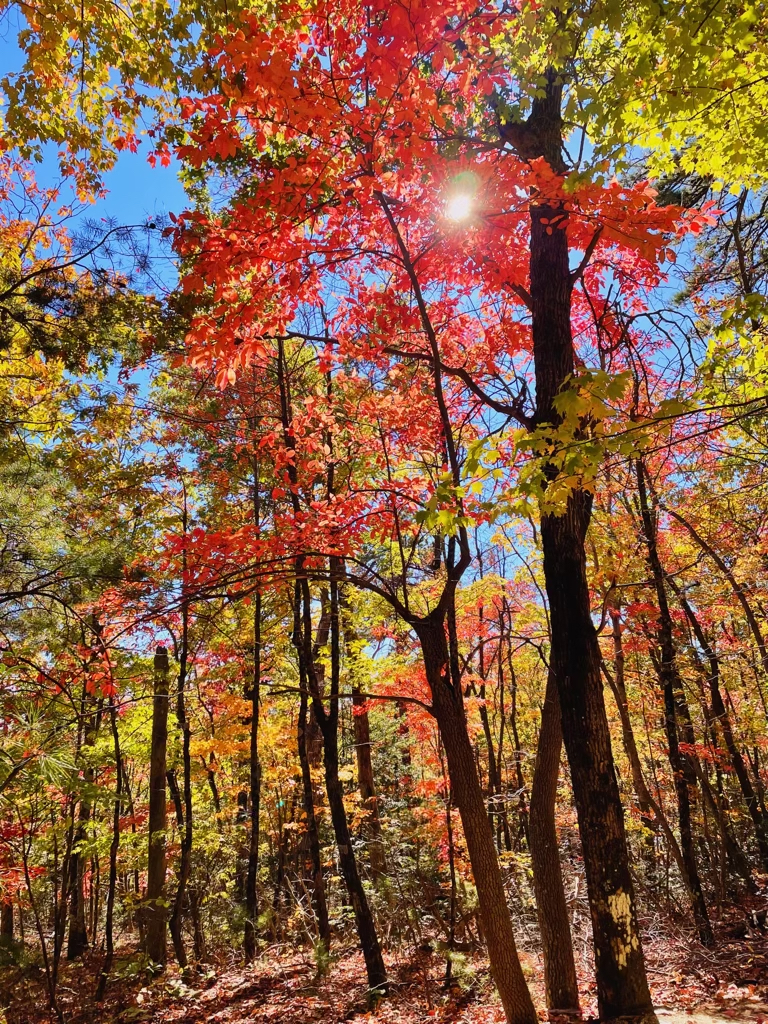To all the stressed out and tired, take a hike!
In our hard and fast world of multi-tasking expectations, wouldn’t it be nice to go out into the woods and immerse yourself in nature? Meandering along, just you and your thoughts, until your thoughts leave you and then all you have is the sound of the woods. Breeze blowing through green and leafy treetops, birds singing, squirrels and rabbits rustling in the undergrowth along the edge of the path.
Is that kind of empty silence daunting? Are you anxious without your phone? Do you feel guilty about not being in a rush to get someplace only to be left waiting once you get there? Are you stricken by the sense that you’re wasting time?
If you’re going to waste time, waste it on your terms.
Keep walking. Breathe in something other than the scent of your neighbor’s fabric softener wafting out of their dryer vent. Instead, inhale clean air; smell warm pine needles baking in the sun or damp earth. Enjoy the feeling of the sun-dappled shade on your face, warm and cold. Appreciate the feeling of making your way along a path to nowhere before turning around, at some point. Don’t think, just admire your return path. Even though it’s the same path, it looks different in that direction. Go slow, notice the differences.
After an hour, maybe an hour and a half, your brain has adapted. You’re calmer and less anxious, happier. And this feeling of well-being may actually last a day or two. Now you are restored and ready to return to your busy noisy life, already in progress.
That, dear readers, is forest bathing.
The term shinrin-yoku, or forest bathing, originated in Japan in the 1980s as a response to the negative health effects of too much screen time and too much time spent indoors. The solution? Unplug and go outside, into the forest and woods, and bathe—immerse oneself—in nature.
The roots of this idea, however, go back centuries to the Black Forest in Germany when Roman historian Publius Cornelius Tacitus first wrote about the forest-loving Germanic peoples in 98 AD. Then in the 18th century, German poet and writer Ludwig Tieck coined the term waldeinsamkeit which translates into forest loneliness. In public readings of his work, he started a practice of waldeinsamkeit that still goes on today. In fact, in Germany, there are about 300 luftkurorts, air-cure locations, which meet the government’s approved standards for fresh air and pure water. And the health insurance there will cover a one- or two-week cure for Germany’s stressed out workers and citizens. Think Baden-Baden, the famous spa town.
Mozart, Goethe, and many other well-known figures from history have gone into the forest for its curative and therapeutic powers. Ralph Waldo Emerson, in his poem “Waldeinsamkeit,” tells us how much he loved being in the forest, as opposed to “cities of mortals woe begone.” And in therapies developed in the 19th century, Sebastian Kneipp isolated his patients in the forest and subjected them to hydrotherapy. The idea was to help them slow thought processing and cultivate their attention to body, mind, and spirit.
Cultivation of attention suggests the more modern term, mindfulness, which first came to our collective consciousness a few decades ago from psychologist Jon Kabat-Zinn. The intentional focus on just one thing at a time, doing one thing at a time, and taking your time.
Clearly, forest loneliness and forest bathing have been around for a long time, waiting for us to come around to it, just when we need it most.
But, just how good is it?
We’re lucky, here in Apex. We have some great parks and green spaces, and with the American Tobacco Trail running though our town we can try forest bathing anytime!
Anecdotal evidence tells us that two hours spent out among the trees will slow you down, restore your health, help you disconnect from addictive technologies and just generally relax you and bring you into the present moment.
Studies from Japan, Scandinavia, and Stanford University, to name a few, explain that trees release phytoncides, chemicals that contain terpenes, which are the compounds that produce scents.
When we are exposed to them in the woods or forest, the possible benefits are amazing and can include:
A boost to the immune system
Protection against diabetes, obesity, and heart disease
Improved mood
Reduced inflammation
Enhanced creativity
Increased energy
Better sleep
An influx of fresh air, which helps with asthma and COPD
All you have to do is walk, as slow or fast as you want.
Naturally, results vary from person to person and will depend on how long one spends outside. As little as an hour can make a noticeable difference, especially when mindfulness techniques are used. But don’t take my word for it. It’s springtime in Apex and the trees are just waiting to rejuvenate and revitalize us. So, step away from life’s distractions, try forest bathing, and feel refreshed.
Sources for this article include:
Waldeinsamkeit—Germany’s cherished forest tradition by Mike MacEacheran. (https://www.bbc.com/travel/article/20210314-waldeinsamkeit-germanys-cherished-forest-tradition), March 15, 2021.
Wellness through Waldeinsamkeit—Why Germans go into Forests Alone to Cure Stress by Tom Burson. (https://amuse.vice.com/en_us/article/5984vb/waldeinsamkeit-german-cure-stress), September 18, 2018.
Importance of Forest Bathing. Blog post by Faith Ebiojo David. (https://naturecuresus.org/importance-of-forest-bathing/), August 7, 2020.








